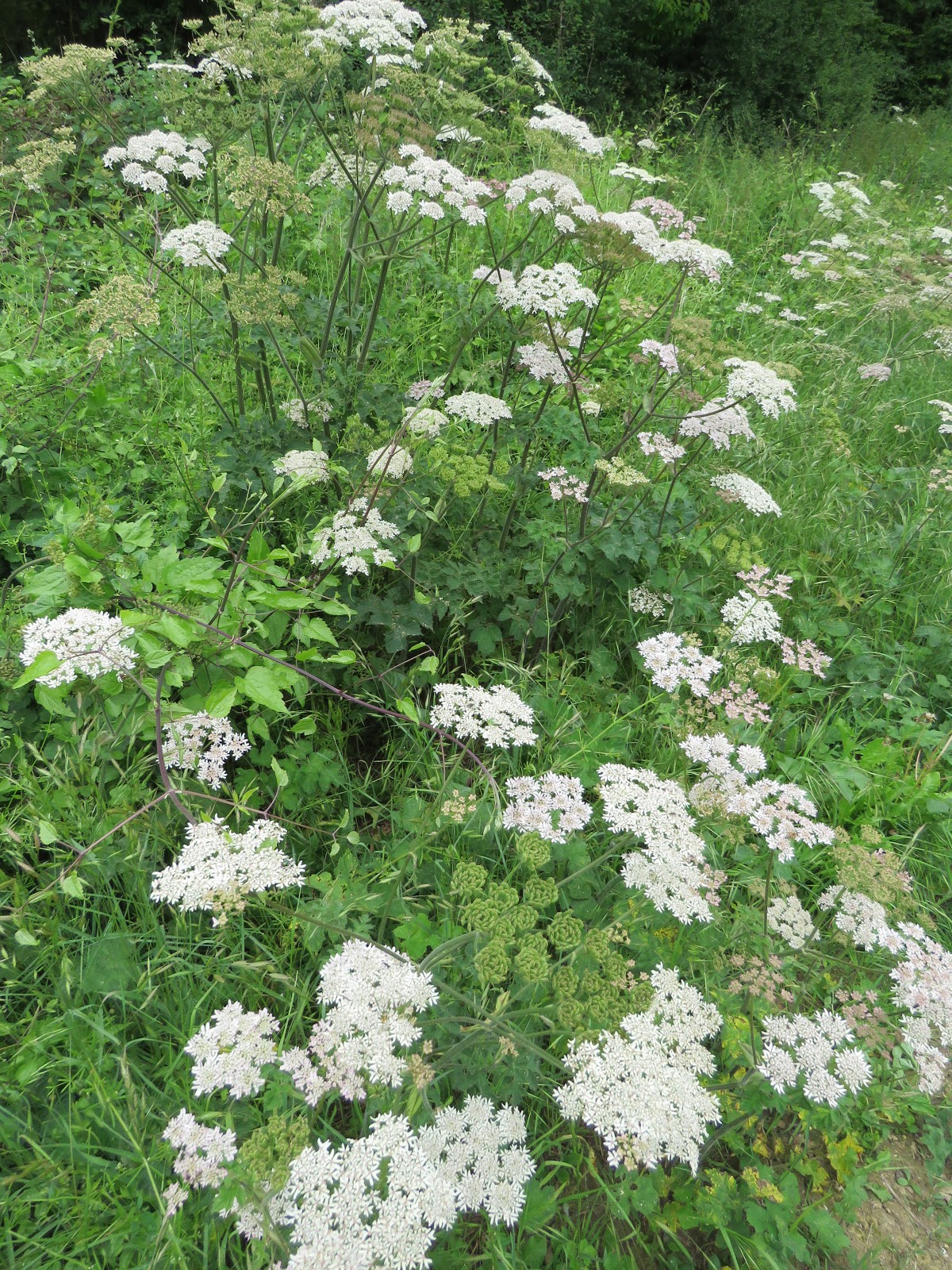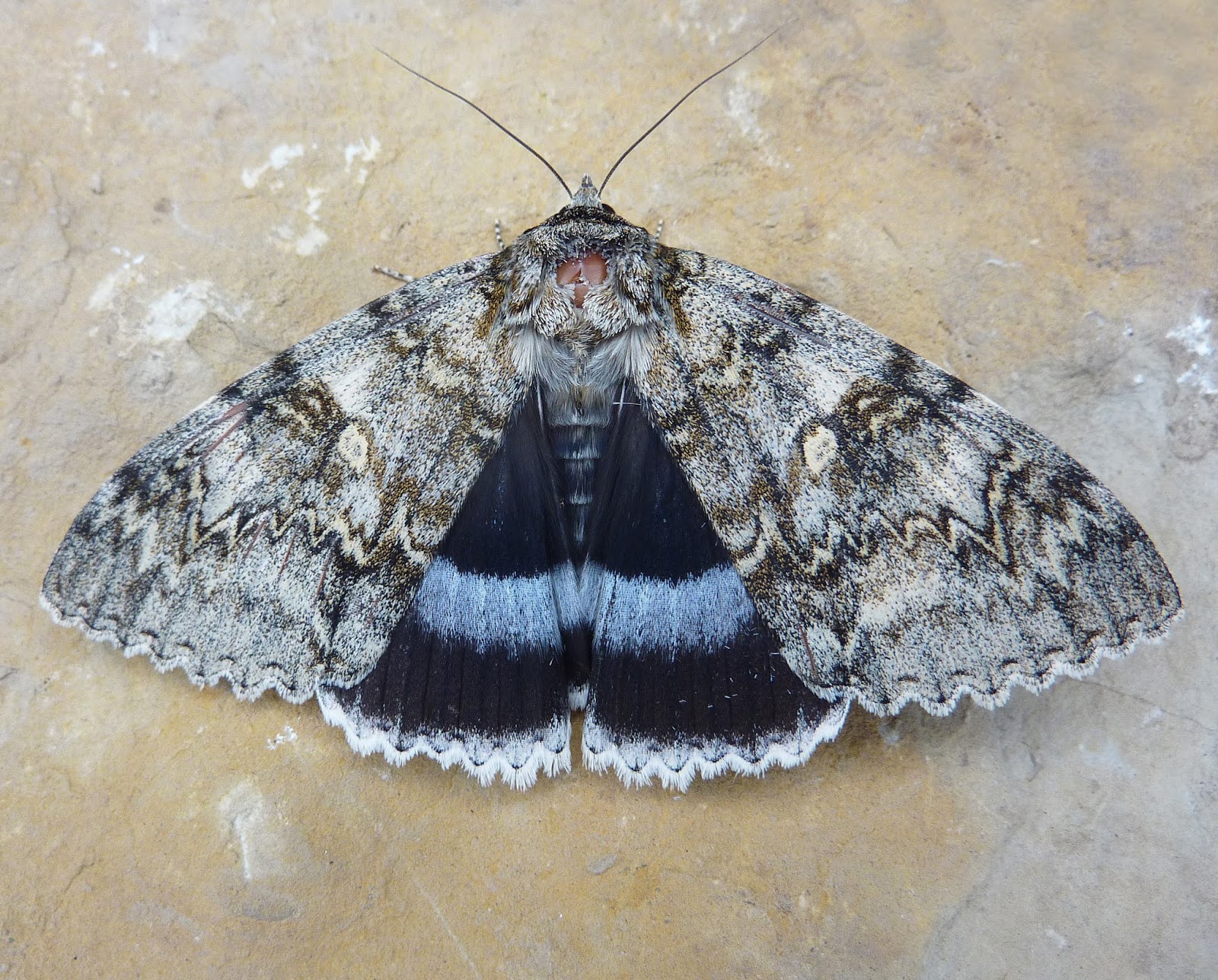The hidden world on Hogweed

By mid-June I shed my birding skin and grow another, one that is confused by invertebrates and flowers. My current favourite place, Park Downs - just a couple of miles from home - has several stands of Hogweed (above), a common plant that deserves close scrutiny. Just look at a flowerhead and be amazed! This is fairly typical of what you can find - a chaos of feeding invertebrates, some so small that they can be easily overlooked. And now zoom in... This is where I get confused. What are they? The 'black' bugs with the red side-patches (cuneus) I believe to be Closterotomus trivialis , which has only been recorded in England since 2009, but appears to be very common at Park Downs! The smaller, dull beetles are (I think), Bruchus rufipes . The beetle on the far right is a Varied Carpet Beetle (fairly confident about this one). But what of the black beetle with the long antennae at the top left? Martin F - help please!! As you can tell, my knowledge of bugs and beetles is rudimen







